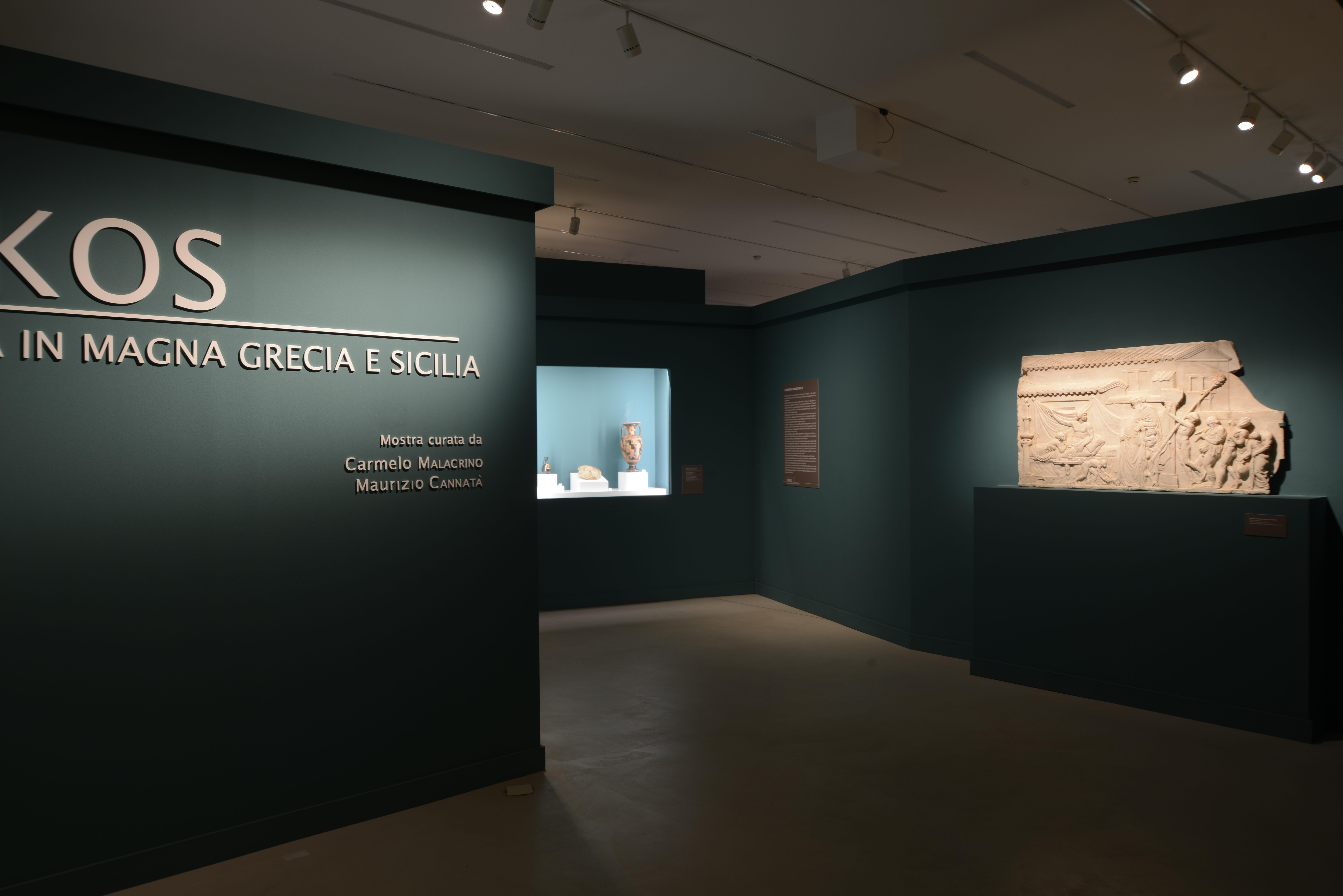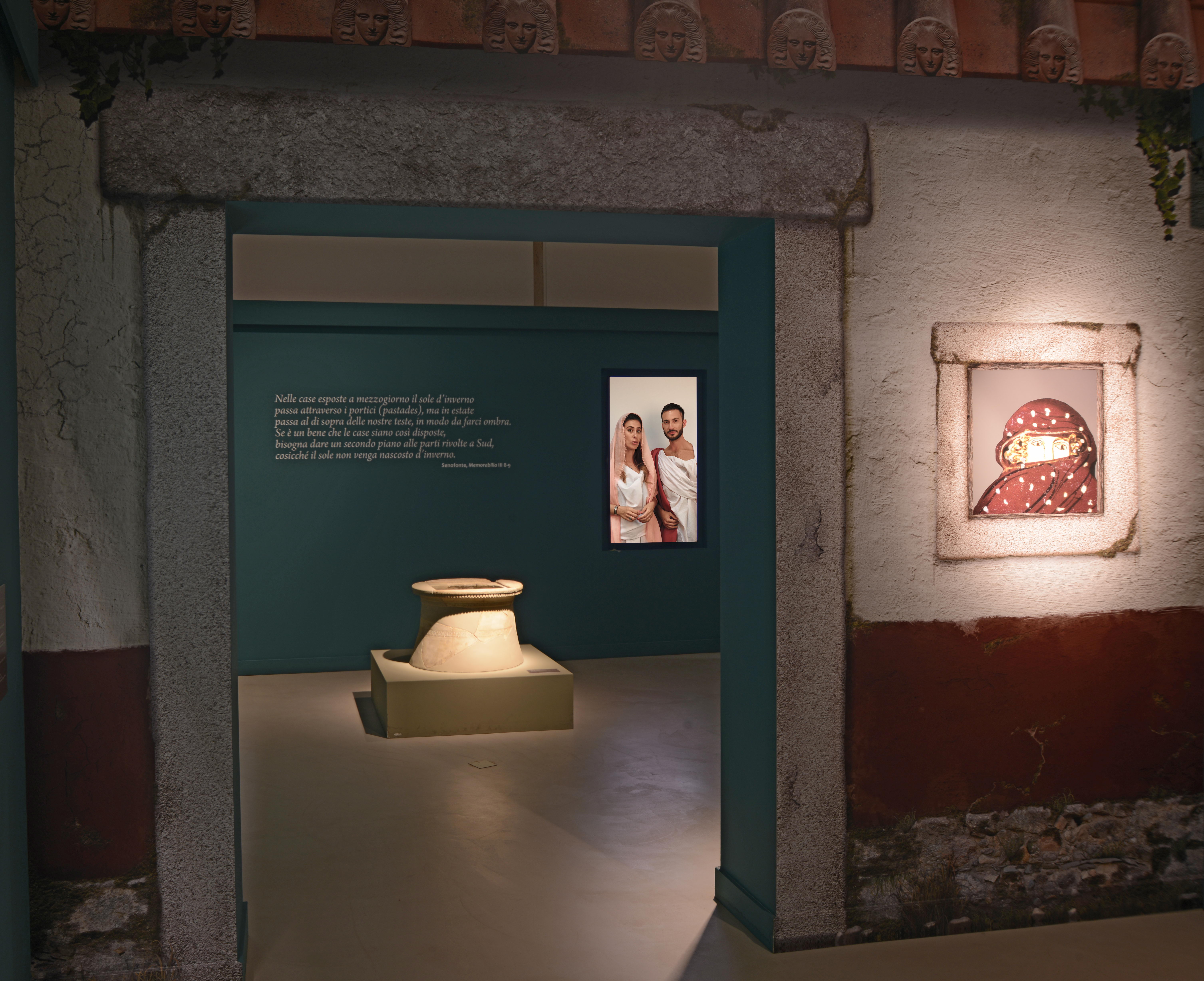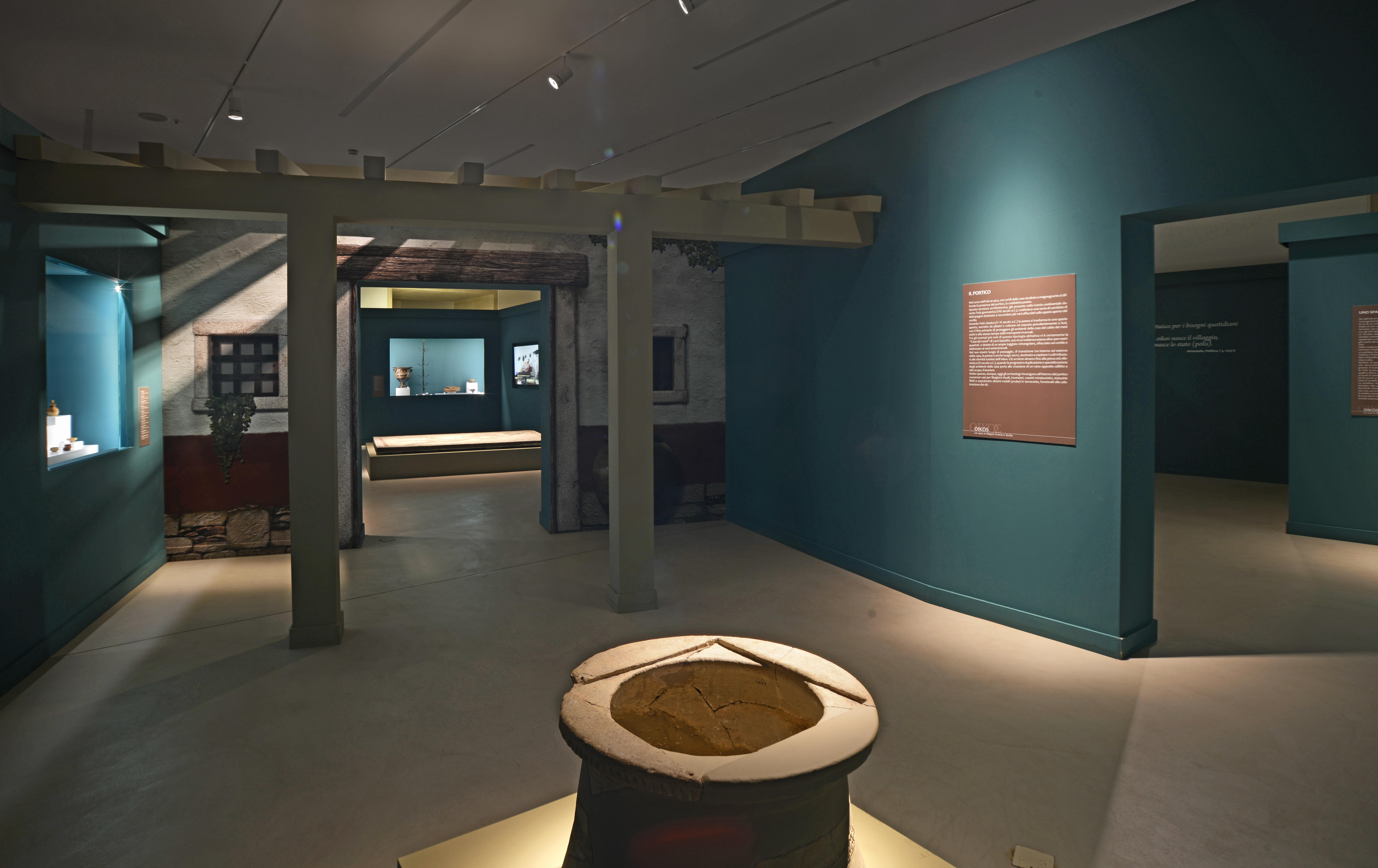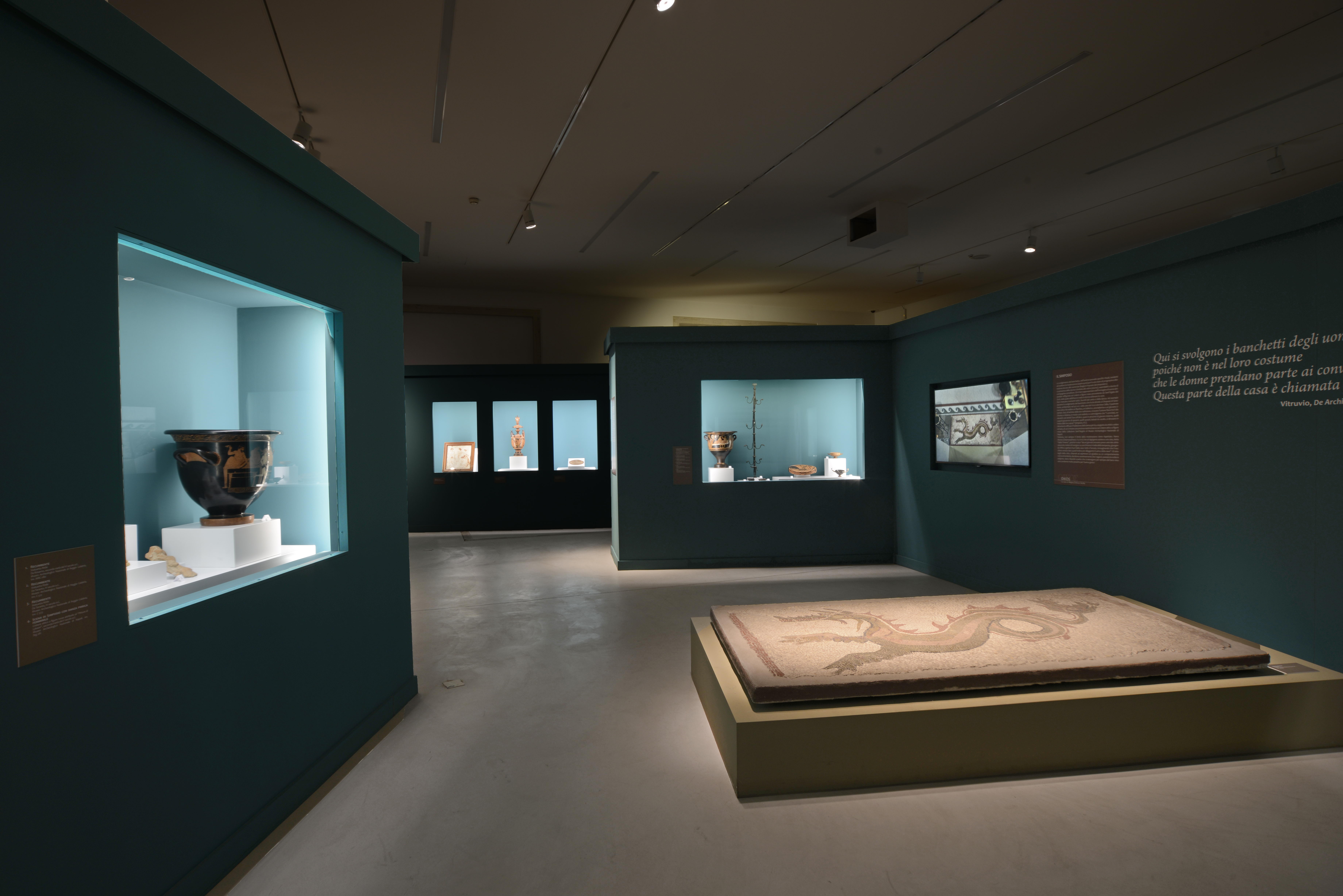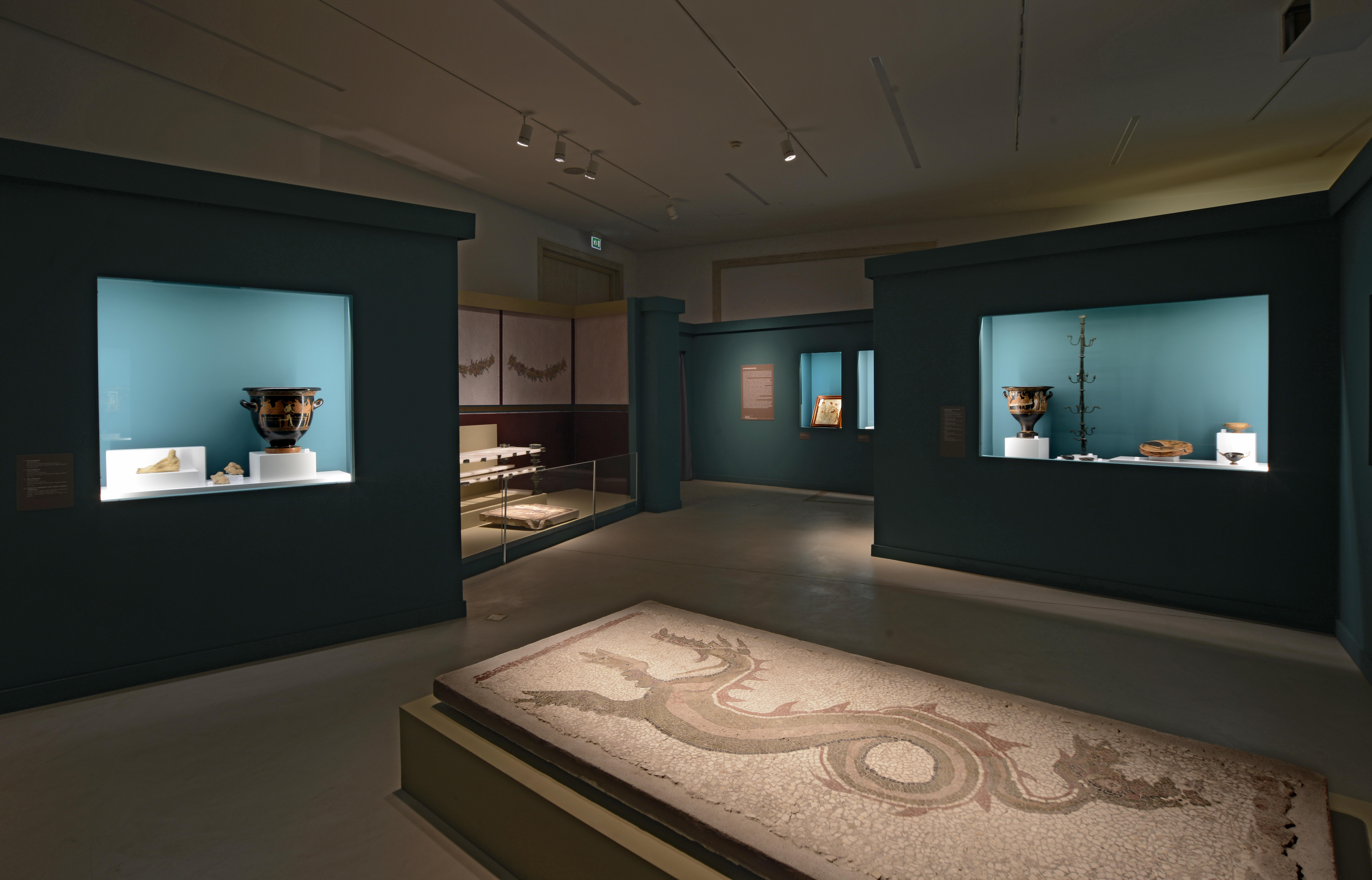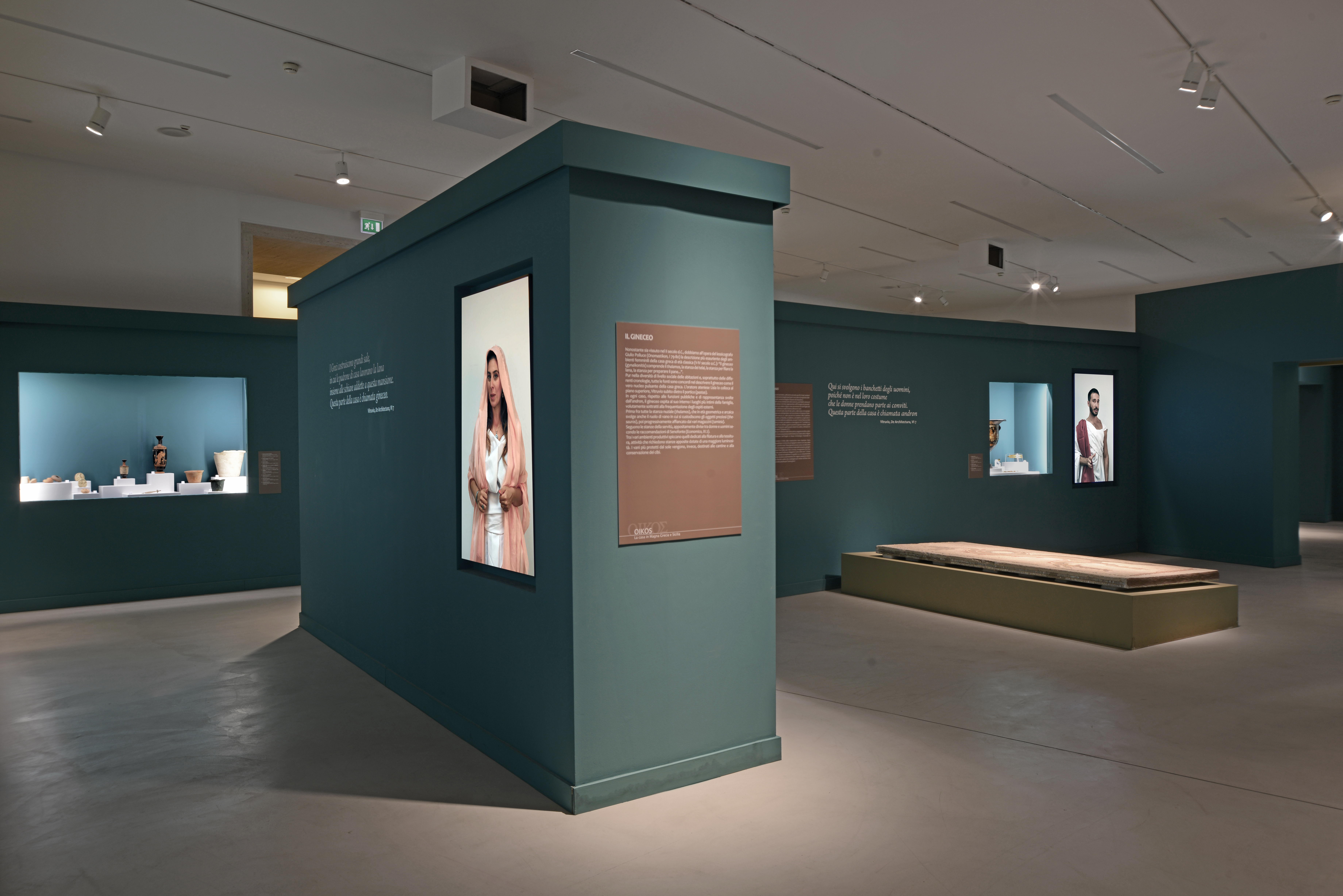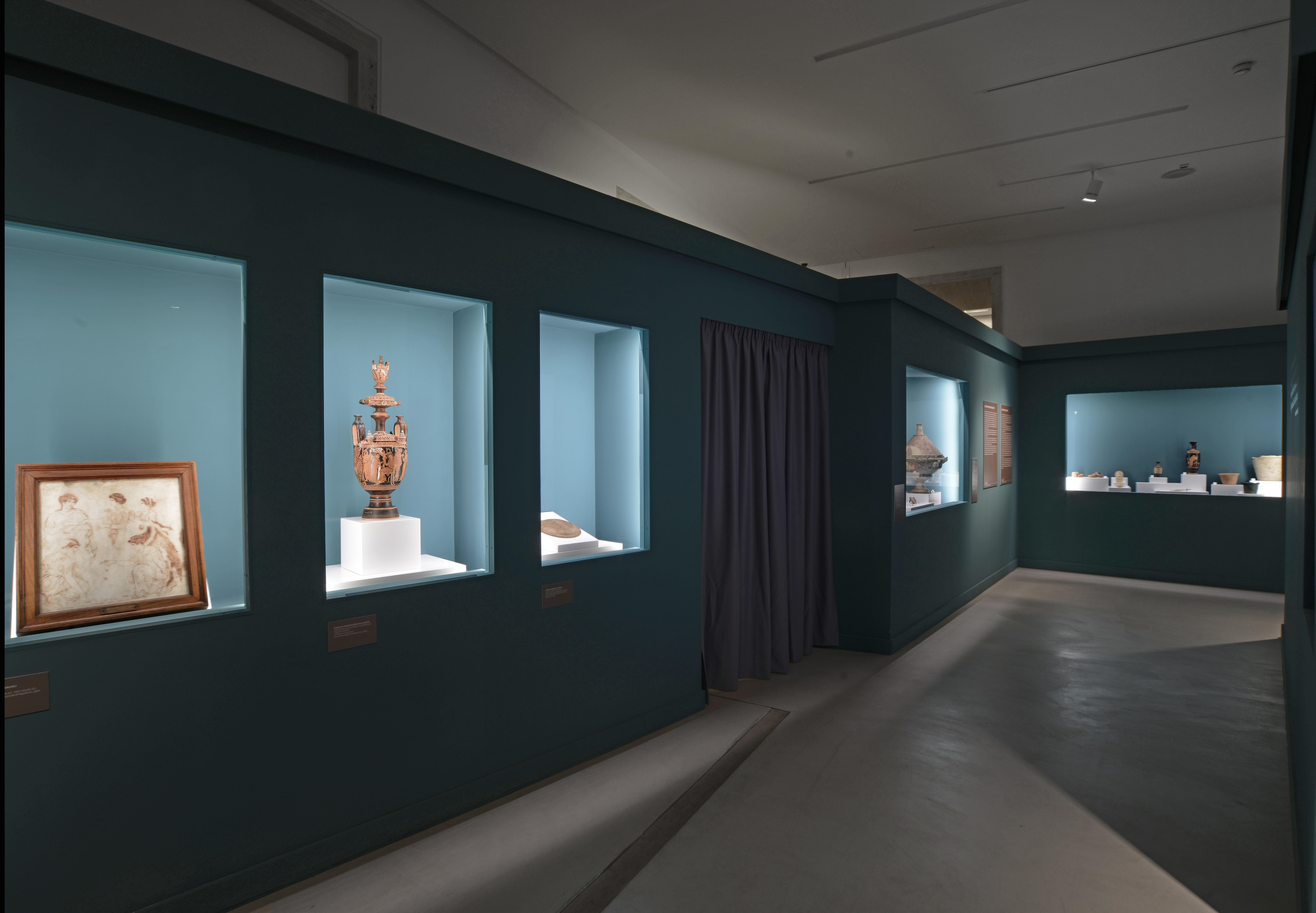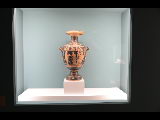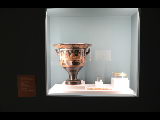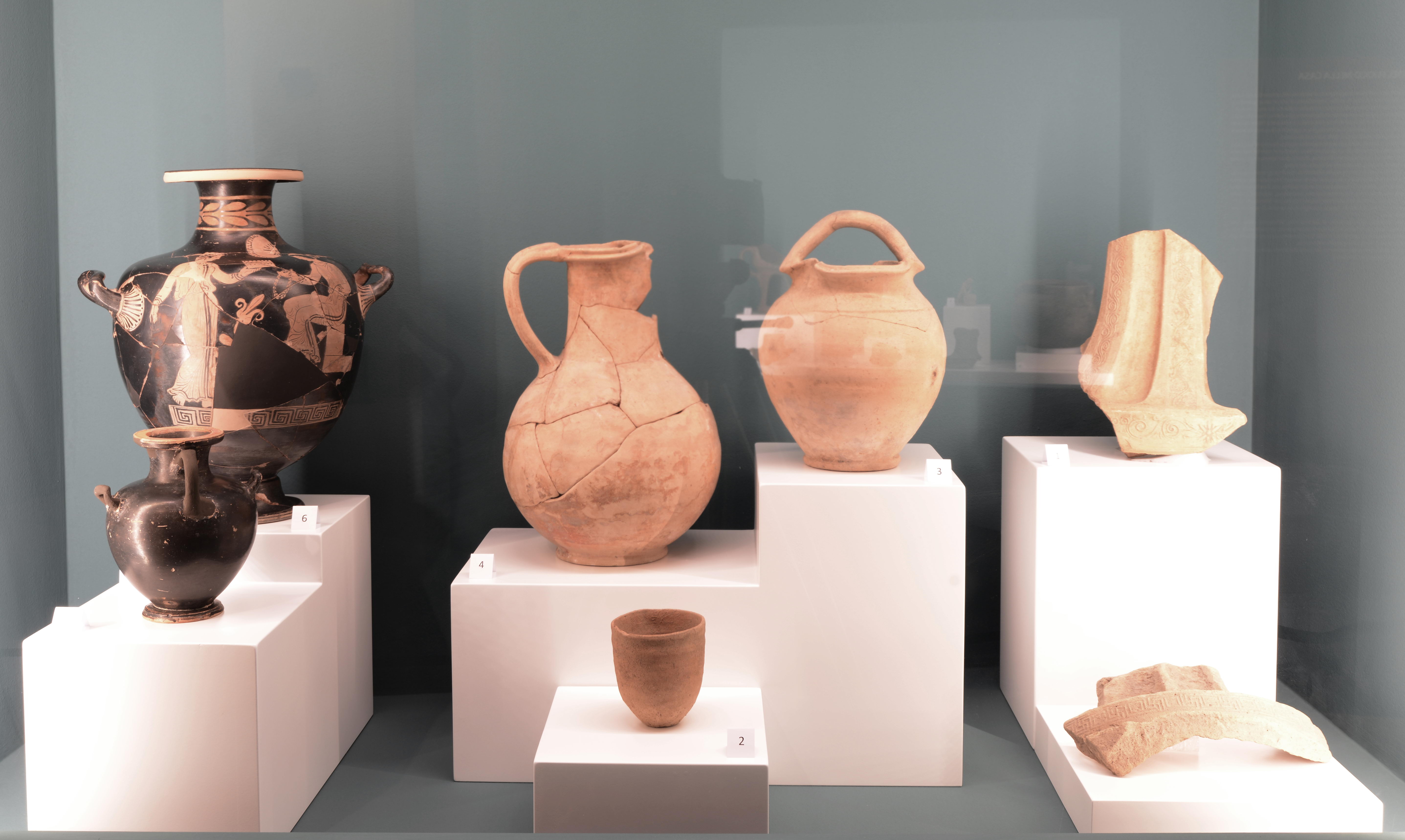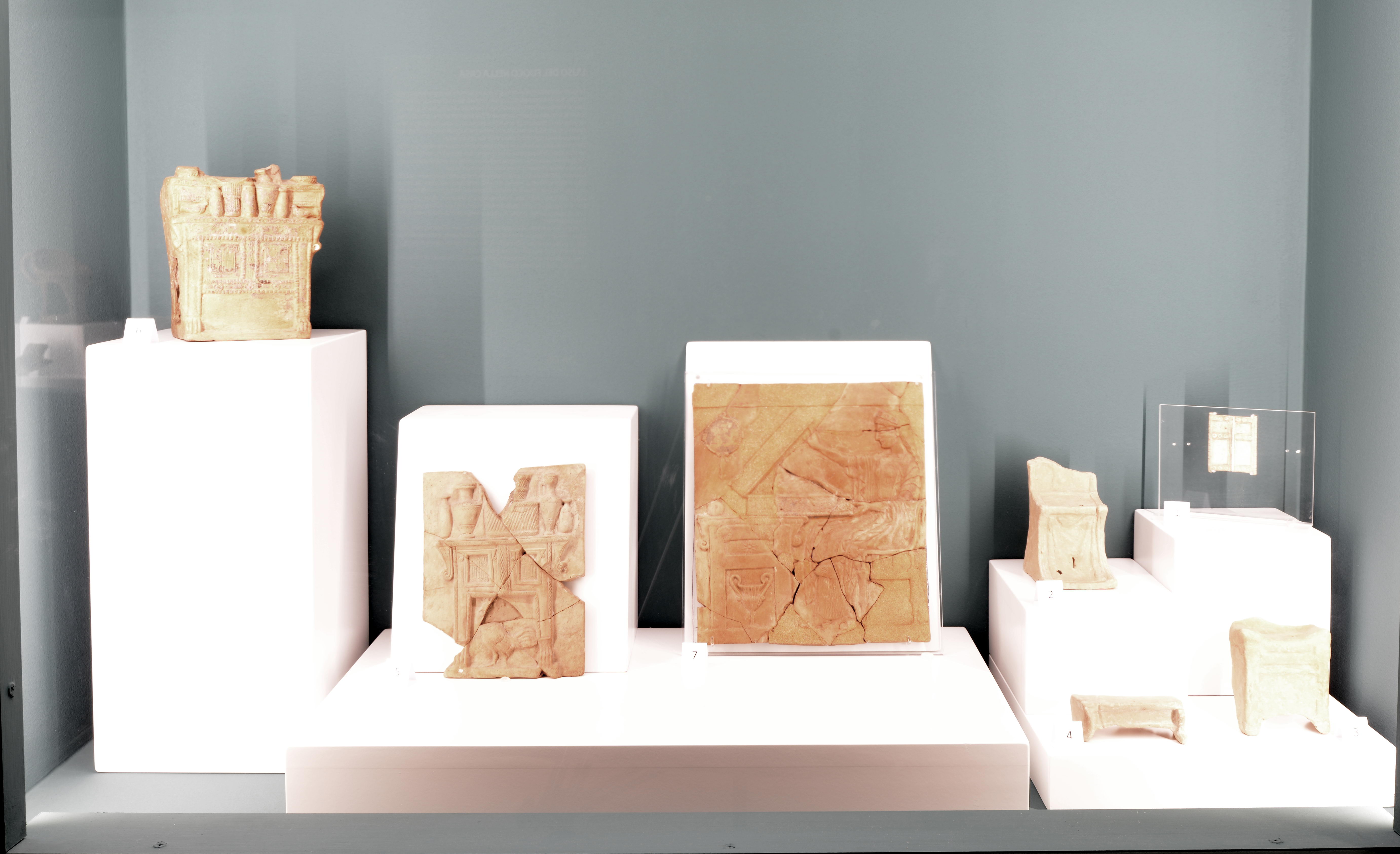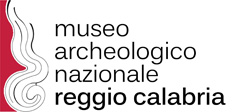Oikos. Opening exhibition on Friday 10th August at 5.30 pm
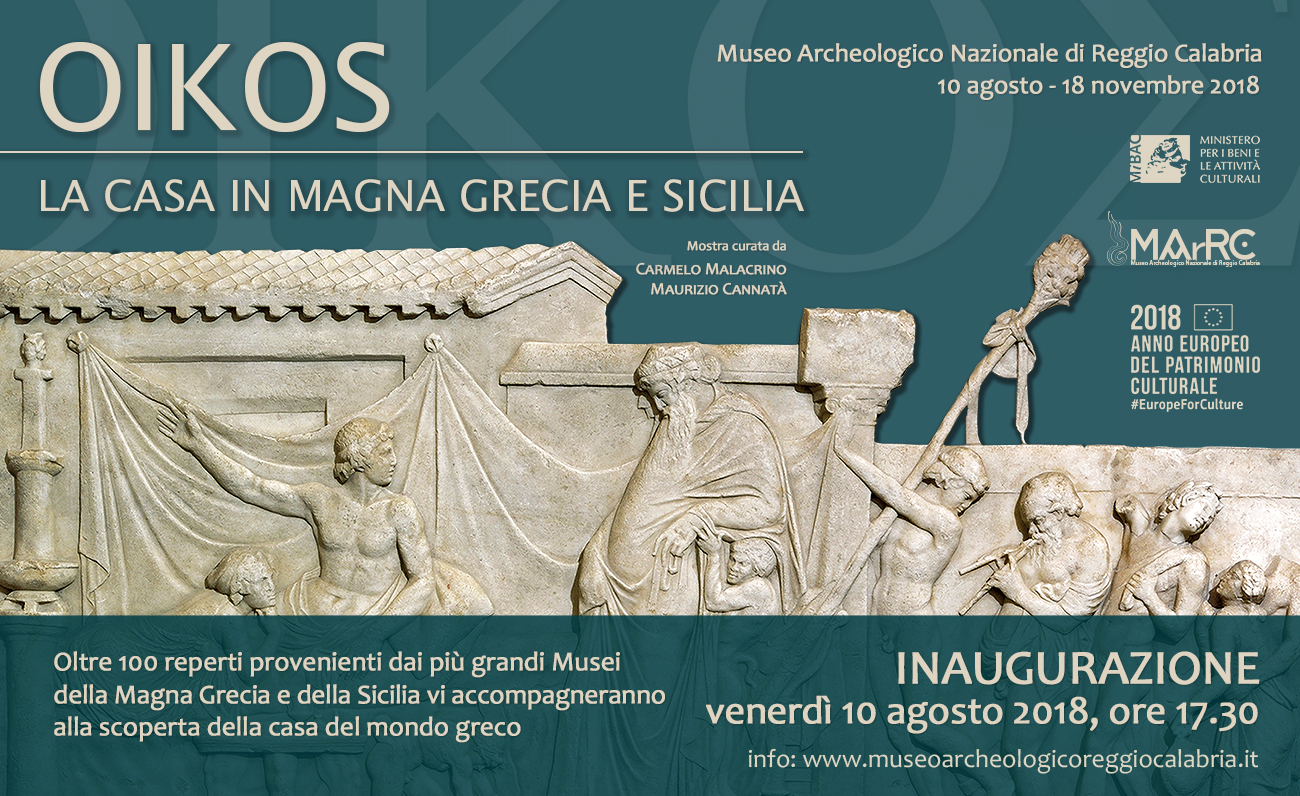
A great event is being celebrated at the National Archaeological Museum of Reggio Calabria: the Inauguration of the “Oikos. The house in Magna Graecia and Sicily” exhibition, by the director of MArRC Carmelo Malacrino and the archaeologist Maurizio Cannatà, that is official at the Museum. Among the enhancement activities of the Museum, it is an initiative of important cultural and public interest, which fits into the program of celebrations for 2018, European Year of Cultural Heritage, to raise awareness and promote the cultural heritage of southern Italy reinforcing the sense of belonging to the common European Mediterranean identity through the theme of the home and living in the Greek world (from the Archaic Age, 8th century BC, to the Hellenistic Age, 1st century BC).
About 120 precious finds from the MArRC collection coming from the National Archaeological Museums of Naples and Taranto, from the Regional Archaeological Museum "Paolo Orsi" of Syracuse, from the Archaeological Parks of Paestum and Campi Flegrei and from the Archaeological Museum of Ancient Kaulon belonging to the Museums of Calabria, are being exhibited in a suggestive itinerary, through educational panels, graphic and digital reconstructions of houses and 3D videos describing moments of everyday life to presents the oikos, the organization of the family in the ancient Greek world, with its inhabitants in domestic spaces.
The leitmotif of the exhibition is the oikos, a term that for the Greeks indicated the house as a physical place of life and the family at the same time. "It will be a fascinating journey through time inside the Greek house, to know the distribution of space, furnishings, everyday objects of common use and also its protagonists, welcomed by the landlords, with women wrapped in their himatia looking out the window", director Carmelo Malacrino says. "We wanted to recreate the forms of living in the ancient Greek world Through the exhibition selection of the display cabinets, the didactic panels, the graphic and digital architectural reconstructions and the 3D videos describing moments of daily life".
"The house for the ancient Greeks was the expression of the identity of the community of its inhabitants and it had been evolved over time depending on society’ changes", Maurizio Cannatà says . "There is no term equivalent to the Latin familia in the Greek language. There is only one single term, oikos. That means that, compared to blood ties, membership in the family group in a given territory prevailed". If the structural organization of the spaces of the house has been changing over the centuries in the ancient Greek world in Calabria and in Sicily, it did not change instead the function of the environments with respect to the roles within the family - the archaeologist explains -: the man, the landlord, citizen, politician, athlete and warrior, lived convivial moments of external relations in the symposium in the Andron. The woman, queen of the gynaeceum, overseed domestic work.
The slogan for the European Year of Cultural Heritage is: "Our heritage: where the past meets the future".
